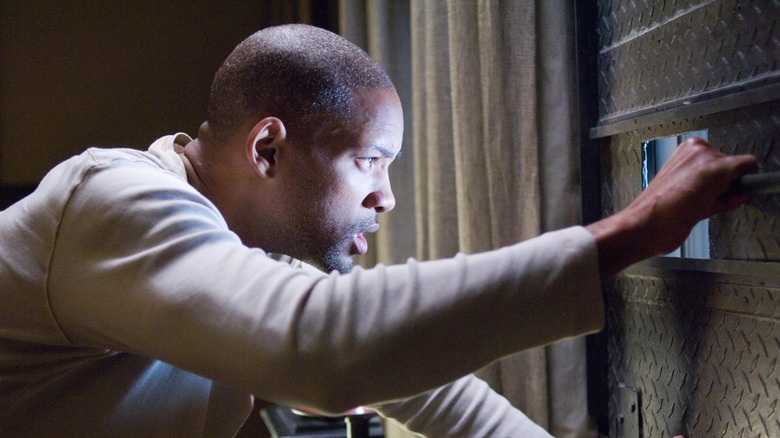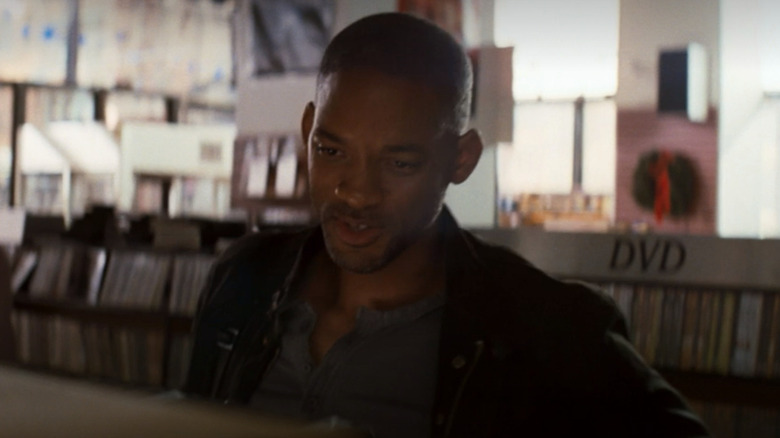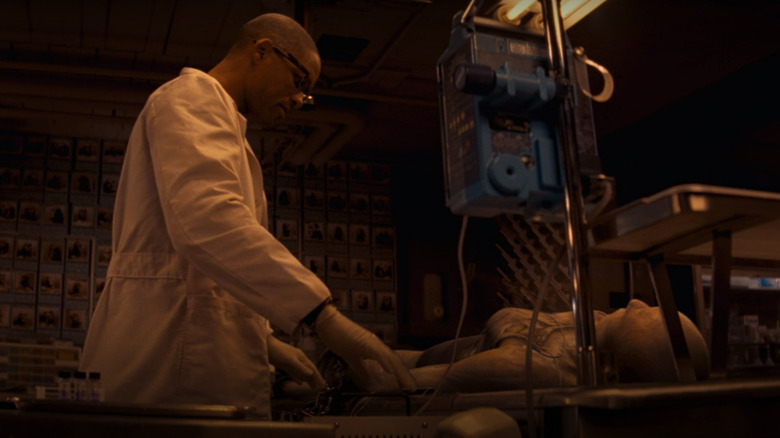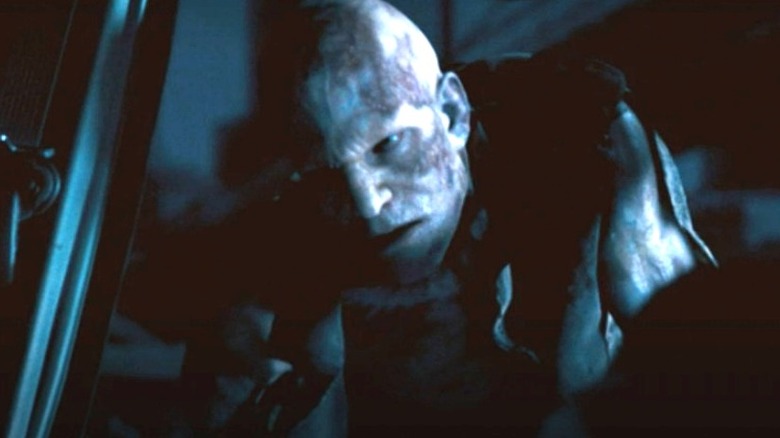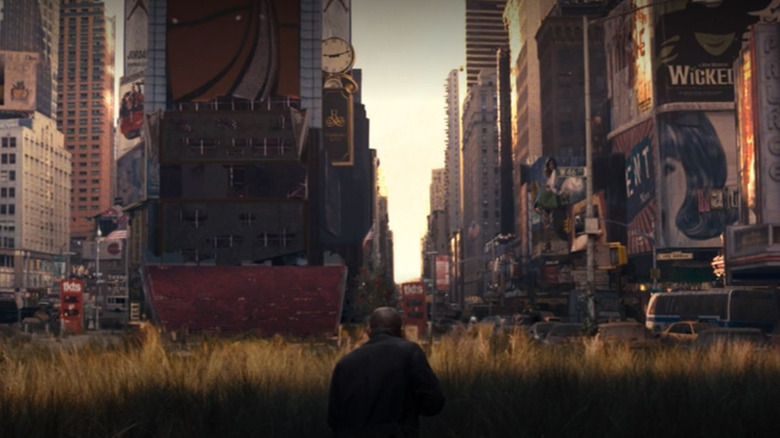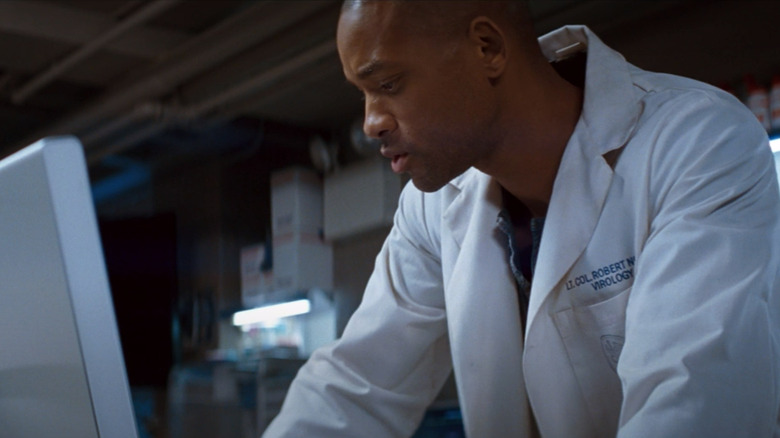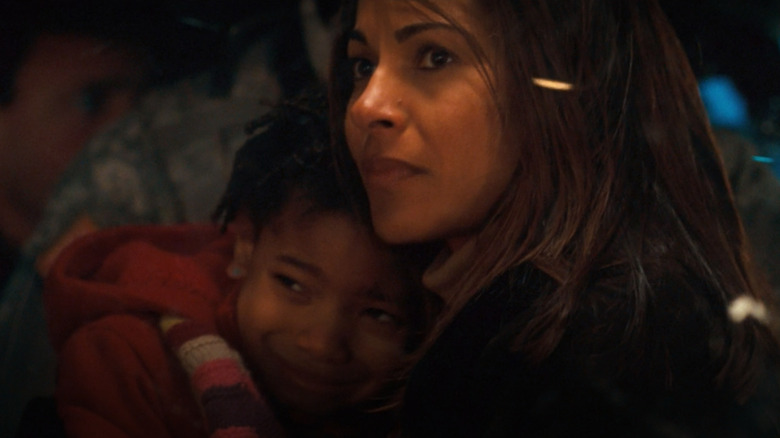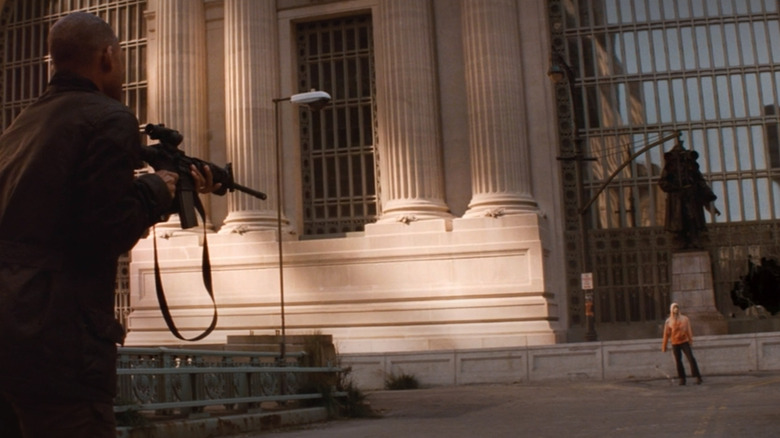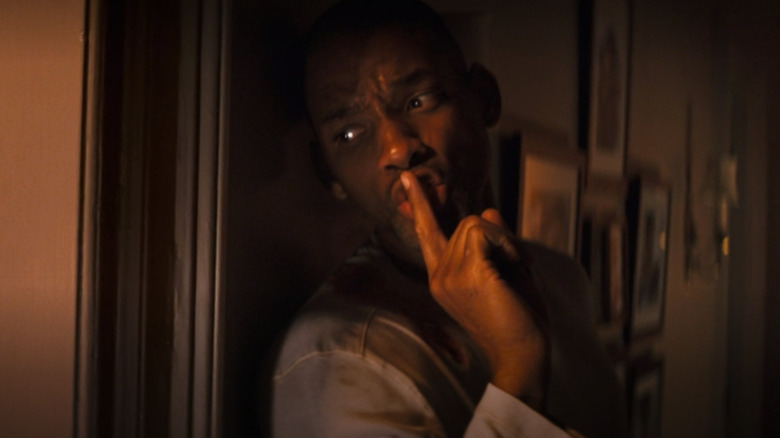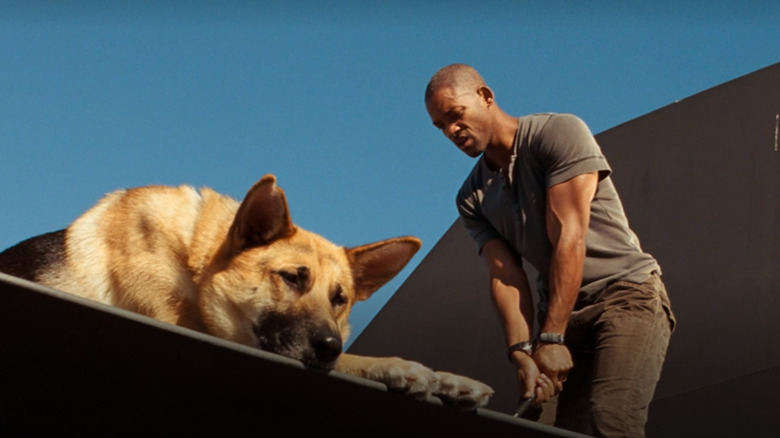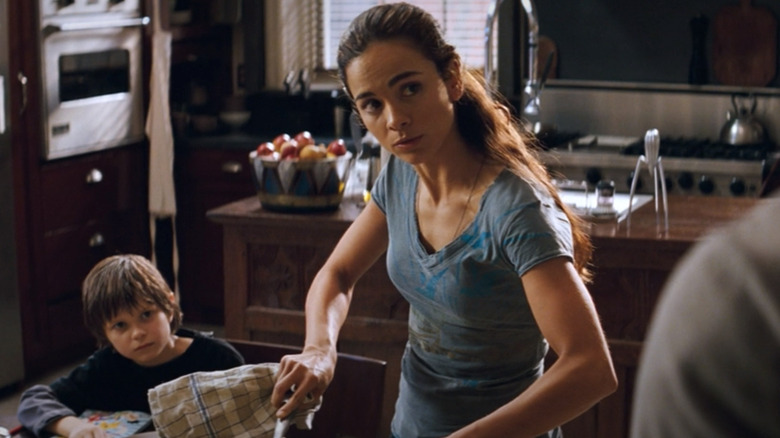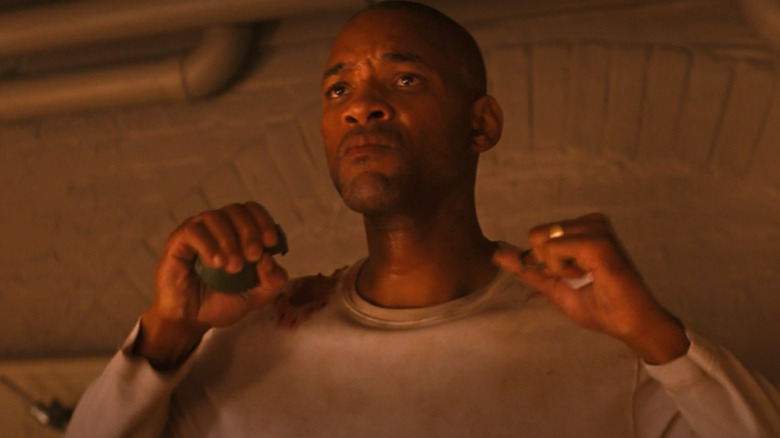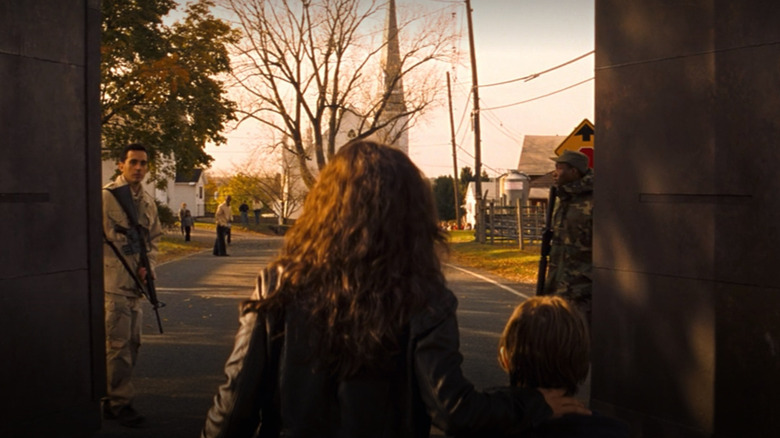I Am Legend's Biggest Differences From The Book Explained
Richard Matheson's 1954 novel "I Am Legend" is a genre touchstone, adapted numerous times across multiple mediums. On the big screen, audiences have endured the end of humanity alongside Vincent Price in 1964's "The Last Man on Earth," Charlton Heston in 1971's "The Omega Man" in 1971 and (finally using the book's title) Will Smith in 2007's "I Am Legend."
Directed by Francis Lawrence, the film was a big hit at the box office, did fairly well with critics, and still ranks among Smith's five highest-grossing domestic releases.
Like most book-to-movie adaptations, each of the various "I Am Legend"-based movies has taken liberties with the source material. But although the 2Will Smith film shares the book's title, the general consensus is that not only is "The Last Man on Earth" closest to the book, but "I Am Legend" is actually the least faithful of the three adaptations. Read on for a (spoiler-heavy) breakdown of the most significant ways the book and film versions of "I Am Legend" differ.
The book looks more extensively into the future
At this point, there have been countless stories about post-apocalyptic futures, with some envisioning how the world is going to look multiple decades in the future, and others more immediate. The book and movie versions of "I Am Legend" take opposite sides of the coin.
The "I Am Legend" book was released in 1954, with events of the story primarily taking place in the mid-1970s. While twenty years can sometimes feel like a distant future, it especially did in the mid-20th century; it was a deliberate choice on the part of Matheson to set his story many years ahead of the time when people would be reading it. On the other hand, the movie was released in 2007, and explains that in 2009 an attempt was made to genetically re-engineer measles to cure cancer — but then everything goes wrong. In this reality, by 2012, Smith's Robert Neville is all alone, hiding from the Darkseekers.
The end result? Clearly, the film was attempting to evoke a more immediate "this type of world could be just around the corner" panic from the audience. The downside? Watch the film today and its 2009 end of the world scenario feels dated.
The book had a disease, the movie a vaccine
Any story about a pandemic needs to come up with what the pandemic is, how it spread, and its ultimate impact.
Unfortunately, in a post-COVID-19 world, it's not difficult for any of us to envision a pandemic. But when Matheson published his book in 1954, it had been some time since the 1918 flu pandemic (also known as "the Spanish flu"), so he had to paint a picture. While some segment of the population would have had vivid memories of the severe pandemic that killed between 25 and 50 million people, many would have only heard stories. Either way, both groups were susceptible to the suggestion of a pandemic that had turned most of the world's population into vampires and had already done its work before anyone could even identify it, let alone cure it.
Perhaps trying to buck the trend of "mysterious disease" films done in the decades after Matheson's book, the filmmakers behind the "I Am Legend" movie decided to give the proceedings a different spin — one that seemed more original, at the time. In the movie, the descent into vampirism/zombification was a devastating side effect from a cancer vaccine.
The book's infected are vampires, the movie more like zombies
The "I Am Legend" book was hugely influential in the genre of undead creature-based horror, to the point where George Romero's pioneering classic "Night of the Living Dead" was inspired by and loosely based on Matheson's novel. But what's interesting is that the undead in the "I Am Legend" book were technically vampires, and were even referred to as such, though there were two very different kinds of vampires in the novel.
One type of vampire in the book was the classic variety, as intelligent and high-functioning as regular humans but sensitive to things like garlic and ultraviolet light. The other were what Romero was inspired by, exhibiting most of the traits that would come to define zombies for decades to come.
So, perhaps things came full circle when the "I Am Legend" movie completely eliminated the intelligent, communicative undead, focusing solely on an army of more traditional zombie-types creatures — even if they do share a few vampire-esque weaknesses, most notably their inability to survive in direct sunlight for more than a few seconds.
The book is set in LA, the movie in NYC
Though the "I Am Legend" book makes a few passing mentions of its setting being in and around Los Angeles, it isn't a particularly important aspect of the story. In fact, for the most part, the novel has kind of an Anywhere, USA feel to its setting — seeming to be deliberately vague in mentioning streets, neighborhoods, or landmarks in an effort to allow for readers to project any number of urban areas onto the proceedings.
On the other hand, from the opening moments of the "I Am Legend" film, viewers see very distinct New York City iconography. After spending some time racing around the streets of NYC in his car, Neville gets out and begins to stalk through some tall grass as the camera reveals that he is in Times Square. The filmmakers wanted to make absolute sure from the very beginning that viewers knew the movie was set in NYC, likely because the contrast of taking urban landmarks and transforming them into signs of isolation (see "Vanilla Sky") can be so striking.
The book's Neville is a regular guy, in the movie he's more
In the grand tradition of sole survivors in post-apocalypse fiction, there are survivors lucking into the distinction and those who survive because they are particularly well-equipped to do so. In "The Walking Dead" and "28 Days Later," for instance, people who were seemingly the last people alive simply endured because they were unconscious in a hospital when things went south and as such were inadvertently protected from zombification.
The book version of Robert Neville survives simply by being a regular guy who is good at boarding up and protecting his home. He isn't particularly skilled in any ways beyond that in terms of surviving against an army of the undead, and just kind of figures it out as he goes along.
With the "I Am Legend" movie being a Will Smith vehicle, of course that version of Neville is much more of a hero type from the beginning. This Neville is both a scientist and a Lieutenant Colonel in the Army — making him smart enough and tough enough to be the kind of soldier super-genius required to be the protagonist of a big-budget Hollywood apocalypse epic.
Neville's wife and daughter are killed in different ways
Both versions of Robert Neville lose their wife and young daughter in the events surrounding the pandemic. But the way their deaths occur differs in a significant way.
In the book, the two simply succumb to the disease; they perish the same way most everyone else on Earth does. The movie, however, decided to go in a slightly different direction, one that really ups the feeling of survivor's guilt that Neville is forced to carry.
As people are fleeing New York City during the early stages of the pandemic, Neville helps his wife (Salli Richardson) and daughter (Willow Smith) get onto one of the helicopters taking non-infected survivors out of the city. Neville decides to stay behind, given his station as both a member of the Army as well as one of the world's leading virologists. He then watches in horror as the helicopter they just boarded crashes in a fiery wreck mere moments after going airborne.
Neville's psychological struggles are depicted differently
Having zero human contact for an extended period of time is enough to wreak havoc on anyone's mental health. If that person believes they might be the last living human on Earth, you've got a recipe for some significant psychological issues. To that end, both the book and movie version of Robert Neville are depicted as struggling with both the isolation and a crushing feeling of despair — though they handle things in different ways.
In the "I Am Legend" book, Neville is much angrier, more bitter, and far more pessimistic. He has turned to alcohol as a coping mechanism. On the other hand, the Neville in the "I Am Legend" movie has an overall more positive attitude, frequently cracking jokes to himself and his canine companion and doing his best to try and keep it together for the sake of the cure he is desperate to find.
That said, big screen Neville isn't completely without his quirks. He finds some semblance of normalcy in placing mannequins around town as a way to make it seem like there are other humans in the city; he even names and interacts with them.
Is Neville trying to eliminate or avoid the threat?
One way both Nevilles try to maintain a sense of normalcy in the face of their dire situation is to develop various routines that they stick to in order to ensure they never lose a sense of purpose. Both frequently look for food and supplies, for instance. Movie Neville also frequents a video store that he uses to "rent" movies that he picks out, pretends to check out, and then later returns before getting another one; it's a routine that he keeps from pre-pandemic times to maintain a connection to better days.
One major difference in the daily routines of the two Nevilles, however, is how they handle their respective creature foes. In the book, Neville has made it his mission to systematically seek out and dispatch each of the vampires. By contrast, the Neville of the movie largely avoids the Darkseekers as often as he can, only engaging them when cornered or left with no other option.
The dog is a major character in the movie, not the book
Despite the fact that the premise of "I Am Legend" is that millions of people have been infected and turned into zombie-like creatures, basically everyone agrees that the saddest moment in the movie is the death of Neville's beloved dog, Sam. In fairness, the movie goes a long way in making viewers care about Sam, showing her as not only a loyal friend to Neville but his only friend, both a loving companion and a proficient post-apocalyptic sidekick. When the moment comes that Neville has no choice but to take Sam's life, it's the hardest moment in the movie to watch.
The "I Am Legend" book also has a dog that meets a tragic end, but the animal doesn't come anywhere close to having the same impact. Neville doesn't meet the dog until much later into the book, whereas Sam is with Neville from the beginning of the movie — and, viewers later learn, was with him back when his family was still alive. The book's dog takes some coaxing to trust Neville, only for Neville to learn that the dog isn't well anyway. All told, the book version of Neville only knew his dog for about a week or so before it died, a far cry from the relationship that the movie Neville has with man's best friend.
Neville encounters no survivors in the book, meets Anna and Ethan in the movie
In the "I Am Legend" novel, Neville spends much of the story believing he is the last living human to not be turned into a vampire. That is, until he meets a woman named Ruth; initially reluctant to trust, he soon decides to give her a chance — only to discover she is actually a vampire pretending to be a human. This is something the creatures in the movie could never pull off.
Neville in the movie also spends much of the film's runtime not encountering another human being, until he eventually crosses paths with a woman named Anna (Alice Braga) and a young boy named Ethan (Charlie Tahan). Thankfully, they are who they say they are, and Neville is finally able to interact with other humans for the first time since the pandemic began. This encounter also leads to the movie Neville's death, but in a very different way than his book counterpart.
Neville is sacrificed by vampires in the book, sacrifices himself in the movie
"I Am legend" is ultimately a sad tale about a desperate man navigating the final days of mankind, so it makes sense that both versions of Neville perish by the end of their respective journeys. In the movie, Neville gets a fitting hero's end when he is faced with the opportunity to save Anna and Ethan — as well as eliminate a whole bunch of Darkseekers — by grabbing a grenade and shoulder-rushing into a crowd of the creatures, blowing up a building they are all in.
The book's denouement is quite different altogether. Neville is tried by the vampires and sentenced to be executed for what they perceive as his crimes against their kind. It is in this moment that the title of the book finally becomes clear; in the movie, the title also applies, but for different reasons.
Neville becomes a legend for negative reasons in the book, positive ones in the film
Robert Neville is the titular legend in both the book and the movie — that much is made clear in both cases. In the movie, Anna explains in voiceover at the end that Neville had become a legend to her and Ethan by sacrificing himself to save them, as well as a legend to the entire human race by managing to finally discover and create the cure for the disease before meeting his end.
In the book, Neville declares himself a legend, though not because he was a hero. Rather, as he faces punishment for the murder of so many vampires, Neville realizes that he had become a mythical figure to the vampires as a sort of boogeyman — and even in death, his legend will live on. The movie Neville is portrayed as being the good guy fighting the bad guys, but that distinction is much more ambiguous in the book, which concludes with Neville realizing his actions against the vampires might have been anything but heroic.
